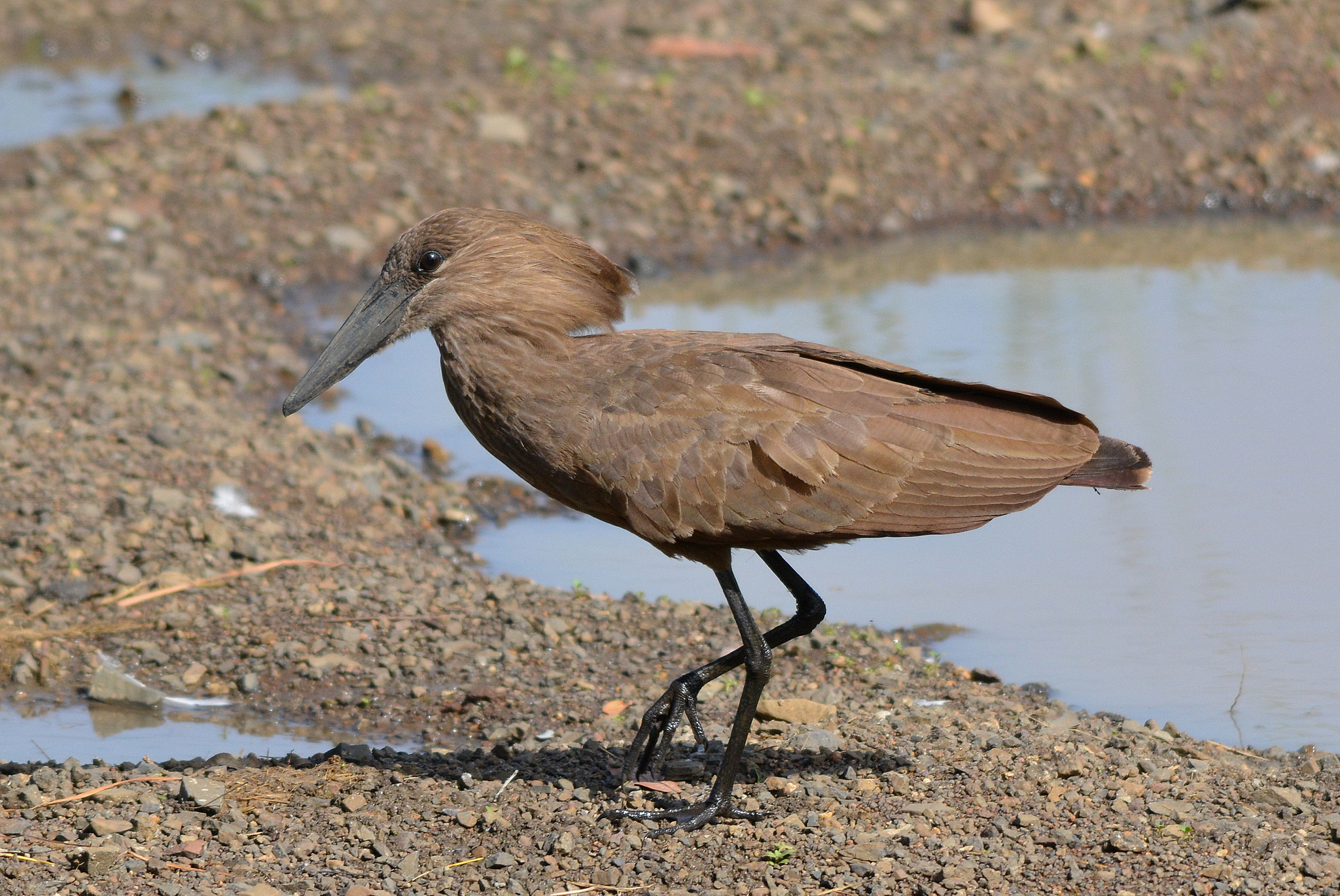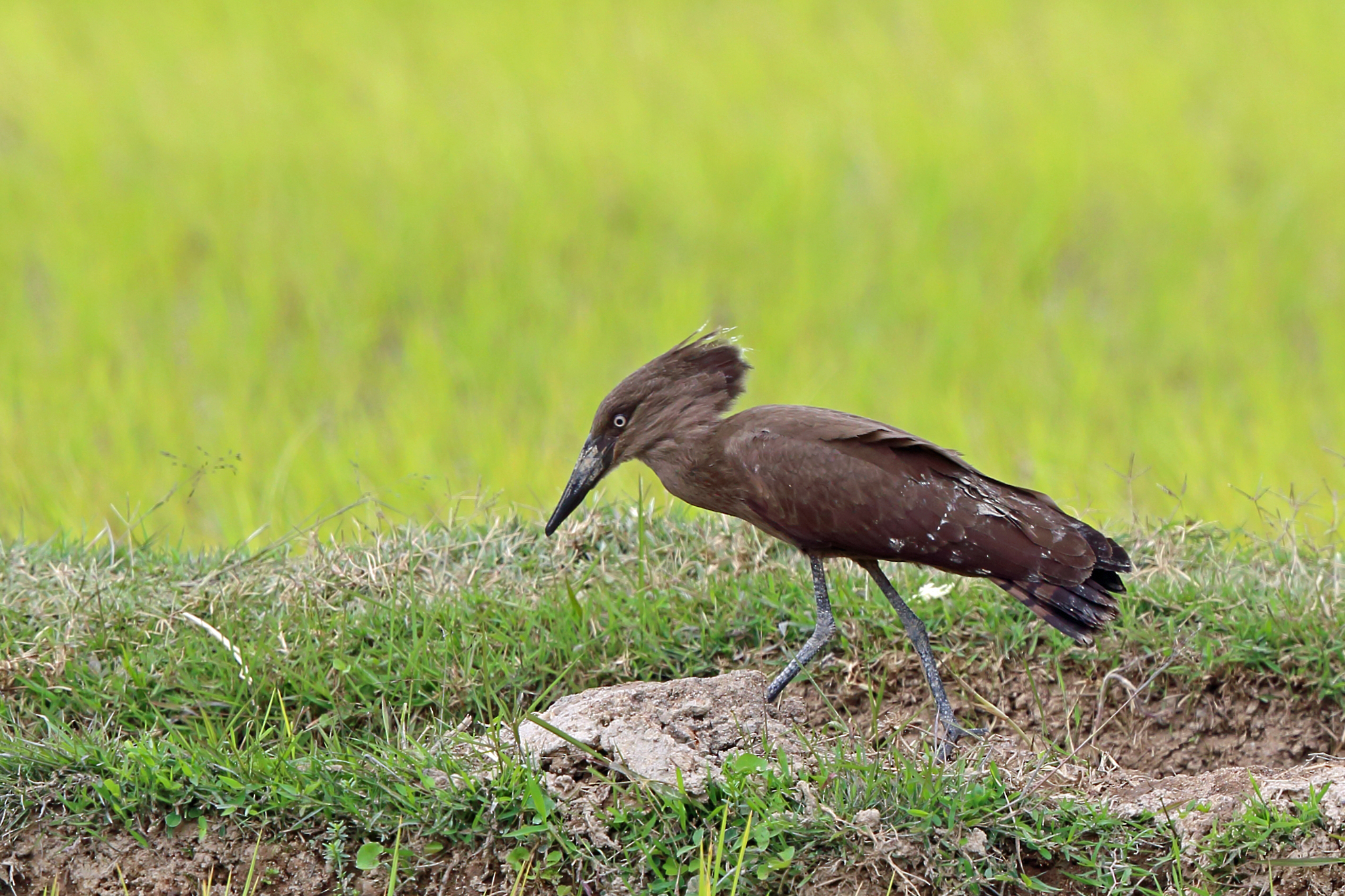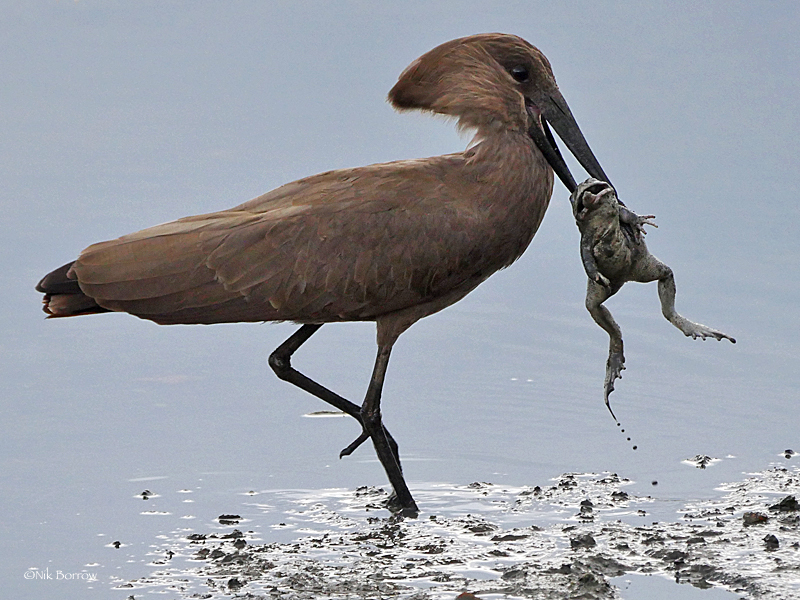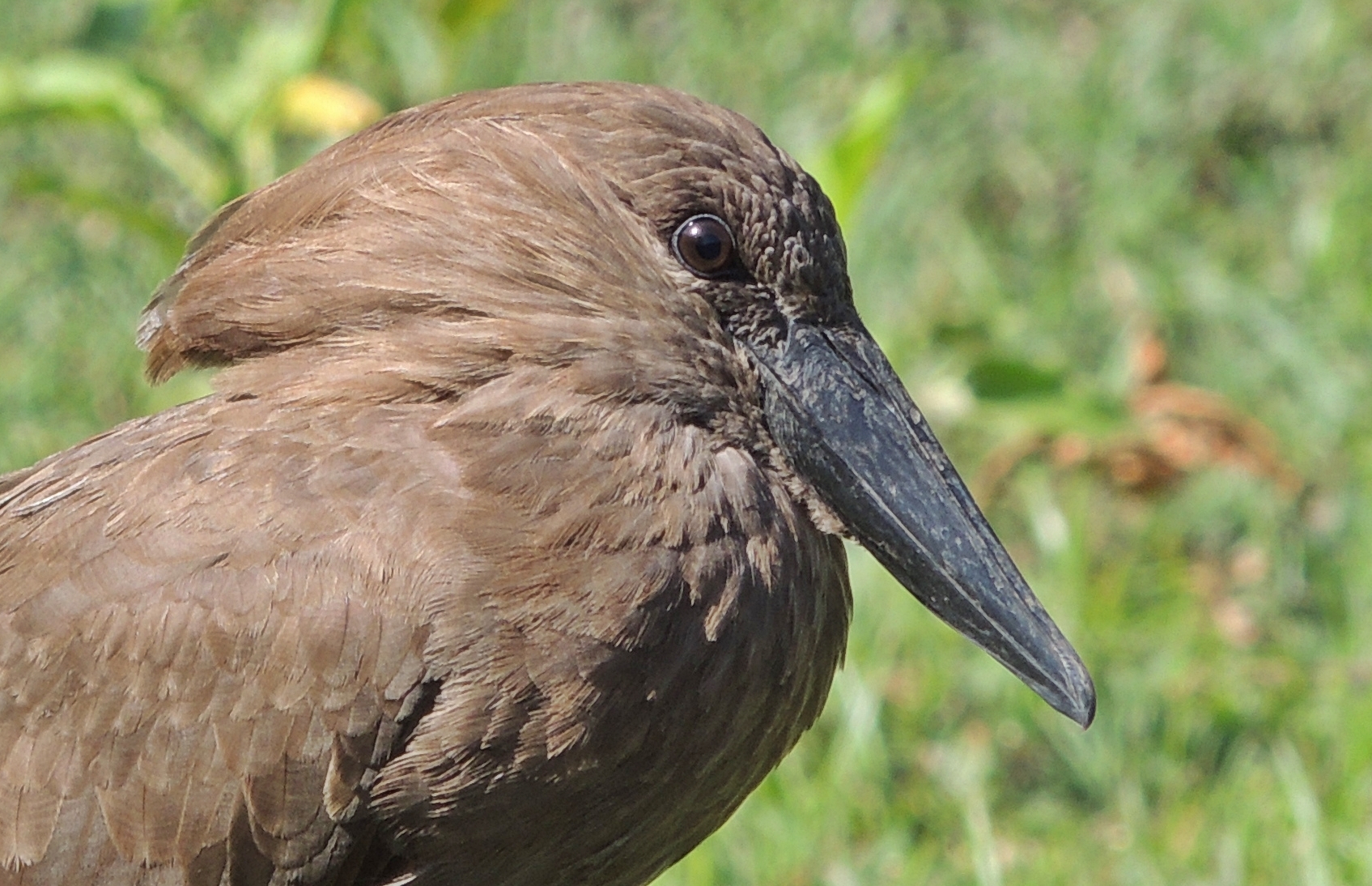- Home
- Conservancy
- Hamerkop
Description
The hamerkop (Scopus umbretta), is a medium-sized wading bird. It is the only living species in the genus Scopus and the family Scopidae. The shape of its head with a long bill and crest at the back is reminiscent of a hammer, which has given this species its name after the Afrikaans word for hammerhead. It is found in Africa, Madagascar to Arabia, living in a wide variety of wetlands, including estuaries, lakesides, fish ponds, riverbanks, and rocky coasts. The hamerkop, which is a sedentary bird that often shows local movements, is not globally threatened and is locally abundant in Africa and Madagascar.
Description
The hamerkop is a medium-sized waterbird, standing 56 cm (22 in) high and weighing 470 g (17 oz), although the subspecies S. u. minor is smaller. Its plumage is a drab brown with purple iridescence on the back; S. u. minor is darker. The tail is faintly barred with darker brown. The sexes are alike and fledglings resembled adults.The bill is long, 80 to 85 mm (3.1–3.3 in), and slightly hooked at the end. It resembles the bill of a shoebill, and is quite compressed and thin, particularly at the lower half of the mandible. The bill is brown in young birds, but becomes black by the time a bird fledges.
The neck and legs are proportionately shorter than those of similar looking Ciconiiformes. The bare parts of the legs are black and the legs are feathered only to the upper part of the tibia. The hamerkop has, for unknown reasons, partially webbed feet.The middle toe is comb-like (pectinated) like a heron's. Its tail is short and its wings are big, wide, and round-tipped; it soars well, although it does so less than the shoebill or storks.[9] When it does so, it stretches its neck forward like a stork or ibis, but when it flaps, it coils its neck back something like a heron.Its gait when walking is jerky and rapid, with its head and neck moving back and forth with each step. It may hold its wings out when running for extra stability.
Fun Facts
Social Behaviour And Calls
The hamerkop is mostly silent when alone, but is fairly vocal when in pairs or in groups. The only call it usually makes when alone is a flight-call, a shrill “nyip” or “kek”. In groups, vocalisations include a range of calls including cackles and nasal rattles.[9] One highly social call is the "yip-purr" call. This call is only made in a social context, when at least three birds, but up to 20 are gathered in a flock. Birds start by giving a number of "yip" calls, eventually giving way to purring notes. This call is made with the neck extended and sometimes accompanied by wing flapping, and becomes more vigorous when larger numbers of birds are present.
Another common social behaviour is "false mounting", in which one bird stands on top of another and appears to mount it, but they do not copulate. This behaviour has been noted between both mated pairs and unmated birds, and even between members of the same sex and in reversed mountings, where females mount males. Because of this, the behaviour is thought to be social and not related to the pair bond. Dominant birds may signal to subordinates by opening their bills slightly and erecting their crests, but the species is not very aggressive in general towards others of its species. Birds in groups also engage in social allopreening when in groups. One bird presents its face of back of the head to the other to be preened





